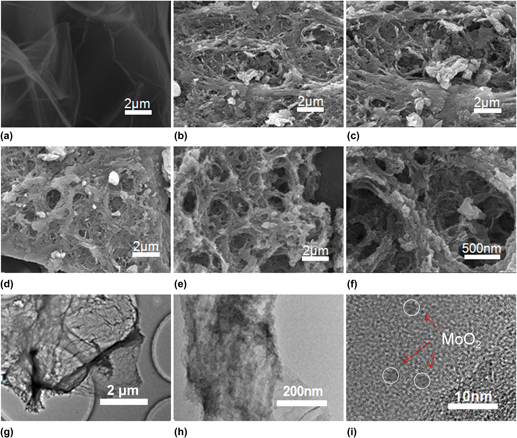Crossref Citations
This article has been cited by the following publications. This list is generated based on data provided by
Crossref.
Guo, Wenxian
Chen, Meiqiong
Zhang, Yan
Yang, Wenna
Guo, Qiyao
Zhang, Min
and
Cheng, Faliang
2018.
Generation three-dimensional nitrogen-doped graphene frameworks as advanced electrode for supercapacitors.
Journal of Materials Research,
Vol. 33,
Issue. 9,
p.
1131.
Ye, An
Qi, Jiqiu
Sui, Yanwei
Yang, Fei
Wei, Fuxiang
He, Yezeng
Meng, Qingkun
and
Sun, Zhi
2018.
In Situ Growth of FeCo-Selenide on Ni Foam as High-Performance Electrode for Electrochemical Energy Storage Devices.
Nano,
Vol. 13,
Issue. 07,
p.
1850078.
Si, Haochen
Sun, Li
Zhang, Yu
Zhang, Yuanxing
Bai, Liqi
and
Zhang, Yihe
2019.
Carbon-coated MoO2 nanoclusters anchored on RGO sheets as high-performance electrodes for symmetric supercapacitors.
Dalton Transactions,
Vol. 48,
Issue. 1,
p.
285.
Mu, Jingbo
Guan, Yuming
Wang, Lei
Li, Huanhuan
Liu, Yifan
Che, Hongwei
Liu, Aifeng
Guo, Zengcai
Zhang, Xiaoliang
and
Zhang, Zhixiao
2019.
Flexible heat-treated PAN nanofiber/MoO2/MoS2 composites as high performance supercapacitor electrodes.
Journal of Materials Science: Materials in Electronics,
Vol. 30,
Issue. 9,
p.
8210.
Jeyasubramanian, K.
Muthuselvi, M.
Hikku, G.S.
and
Muthusankar, E.
2019.
Improving electrochemical performance of reduced graphene oxide by counteracting its aggregation through intercalation of nanoparticles.
Journal of Colloid and Interface Science,
Vol. 549,
Issue. ,
p.
22.
Zan, Guangtao
Wu, Tong
Hu, Ping
Zhou, Yihao
Zhao, Shenlong
Xu, Shumao
Chen, Jun
Cui, Yi
and
Wu, Qingsheng
2020.
An approaching-theoretical-capacity anode material for aqueous battery: Hollow hexagonal prism Bi2O3 assembled by nanoparticles.
Energy Storage Materials,
Vol. 28,
Issue. ,
p.
82.
Chen, Qin
Lou, Zhefeng
Zhang, ShengNan
Xu, Binjie
Zhou, Yuxing
Chen, Huancheng
Chen, Shuijin
Du, Jianhua
Wang, Hangdong
Yang, Jinhu
Wu, QuanSheng
Yazyev, Oleg V.
and
Fang, Minghu
2020.
Large magnetoresistance and nonzero Berry phase in the nodal-line semimetal
MoO2.
Physical Review B,
Vol. 102,
Issue. 16,
Pereira, Marcelo Lopes
and
Ribeiro, Luiz Antônio
2020.
Thermomechanical insight into the stability of nanoporous graphene membranes.
FlatChem,
Vol. 24,
Issue. ,
p.
100196.
Khosroshahi, Zahra
Karimzadeh, Fathallah
Kharaziha, Mahshid
and
Allafchian, Alireza
2020.
A non-enzymatic sensor based on three-dimensional graphene foam decorated with Cu-xCu2O nanoparticles for electrochemical detection of glucose and its application in human serum.
Materials Science and Engineering: C,
Vol. 108,
Issue. ,
p.
110216.
Chen, Jianfa
Jin, Tianxiang
Deng, Hangchun
Huang, Jie
Ren, Guangyuan
and
Qian, Yong
2021.
MoO2 nanoparticles confined in N,P-codoped graphene aerogels with excellent pseudocapacitance performance.
Canadian Journal of Chemistry,
Vol. 99,
Issue. 3,
p.
303.
Sylla, Ndeye F.
Sarr, Samba
Ndiaye, Ndeye M.
Mutuma, Bridget K.
Seck, Astou
Ngom, Balla D.
Chaker, Mohamed
and
Manyala, Ncholu
2021.
Enhanced Electrochemical Behavior of Peanut-Shell Activated Carbon/Molybdenum Oxide/Molybdenum Carbide Ternary Composites.
Nanomaterials,
Vol. 11,
Issue. 4,
p.
1056.
Sharma, Meenakshi
Adalati, Ravikant
Kumar, Ashwani
Chawla, Vipin
and
Chandra, Ramesh
2021.
Single step fabrication of nanostructured Cr2O3-MoO2 composite flexible electrode for top-notch asymmetric supercapacitor.
Applied Surface Science,
Vol. 555,
Issue. ,
p.
149721.
Lonkar, Sunil P.
and
Alhassan, Saeed M.
2021.
Graphene oxide-mediated scalable preparation of heterostructured MoS2–MoO2/graphene nanohybrids for efficient energy storage and hydrogen evolution reaction.
Sustainable Energy & Fuels,
Vol. 5,
Issue. 23,
p.
6124.
Wang, Hai
Xu, Xingping
Wang, Chun
Neville, Anne
and
Hua, Yong
2021.
Fundamental Insight into the Degradation Mechanism of an rGO-Fe3O4 Supercapacitor and Improving Its Capacity Behavior via Adding an Electrolyte Additive.
Energy & Fuels,
Vol. 35,
Issue. 9,
p.
8406.
García‐Miranda Ferrari, Alejandro
Pimlott, Jessica L.
Down, Michael P.
Rowley‐Neale, Samuel J.
and
Banks, Craig E.
2021.
MoO2 Nanowire Electrochemically Decorated Graphene Additively Manufactured Supercapacitor Platforms.
Advanced Energy Materials,
Vol. 11,
Issue. 23,
Bayeh, Anteneh Wodaje
Ou, Yang-Yi
Ou, Yun-Ting
Chang, Yu-Chung
Chen, Hsueh-Yu
Wang, Kai-Chin
Wang, Yao-Ming
Huang, Hsin-Chih
Chiang, Tai-Chin
Kabtamu, Daniel Manaye
and
Wang, Chen-Hao
2021.
MoO2–graphene nanocomposite as an electrocatalyst for high-performance vanadium redox flow battery.
Journal of Energy Storage,
Vol. 40,
Issue. ,
p.
102795.
Shi, Changwei
Feng, Shihao
Li, Xinyuan
Zhang, Jianyong
and
Mai, Liqiang
2022.
Free‐Standing Pearl‐Chains‐like MoO2 Hierarchical Nanowires with Enhanced Pseudocapacitive Energy Storage.
Batteries & Supercaps,
Vol. 5,
Issue. 9,
Boichuk, V.
Kachmar, A.
Kotsyubynsky, V.
Bandura, Kh
and
Fedorchenko, S.
2022.
MoO2/mesoporous carbon and MoO2/reduced graphene oxide composite electrodes for supercapacitor applications.
Materials Today: Proceedings,
Vol. 50,
Issue. ,
p.
423.
Yaseen, Waleed
Xie, Meng
Yusuf, Bashir Adegbemiga
Xu, Yuanguo
Rafiq, Madiha
Ullah, Nabi
Zhou, Puyang
Li, Xiang
and
Xie, Jimin
2022.
Hierarchical Co/MoO2@N-doped carbon nanosheets derived from waste lotus leaves for electrocatalytic water splitting.
International Journal of Hydrogen Energy,
Vol. 47,
Issue. 35,
p.
15673.
Raza, Mohsin Ali
Rehman, Zaeem Ur
Tanvir, Muhammad Gulraiz
and
Maqsood, Muhammad Faheem
2022.
Renewable Polymers and Polymer-Metal Oxide Composites.
p.
195.
